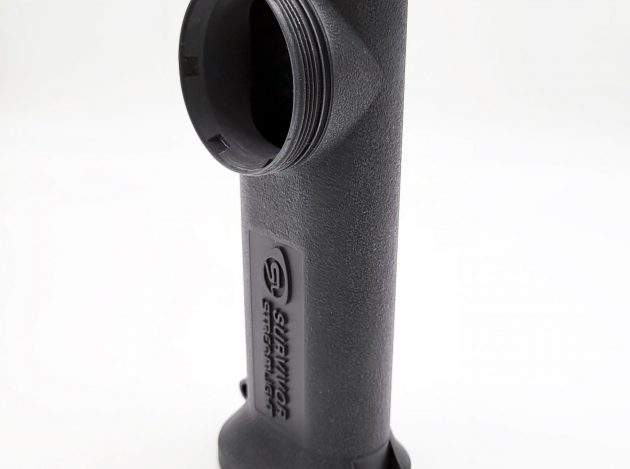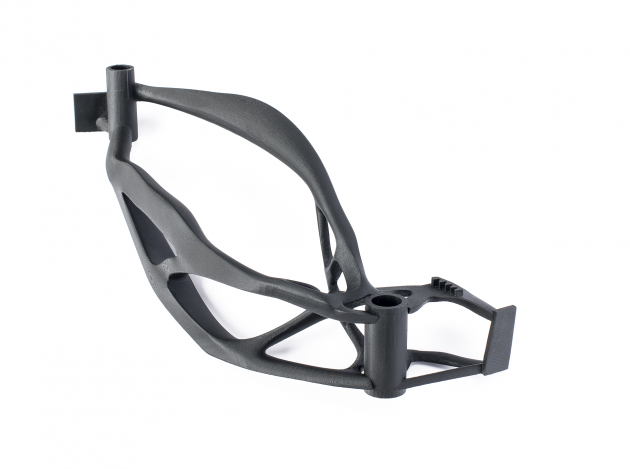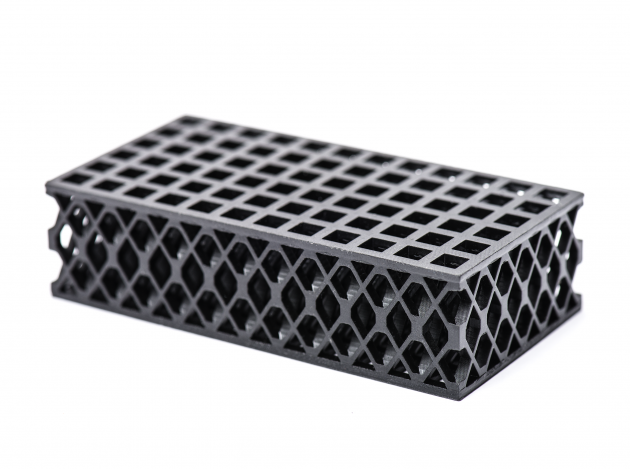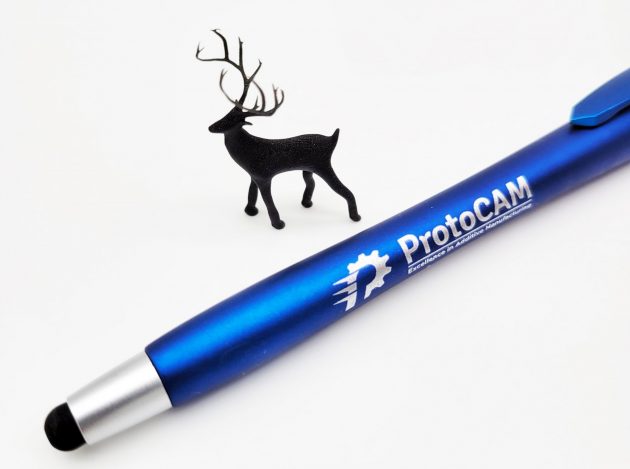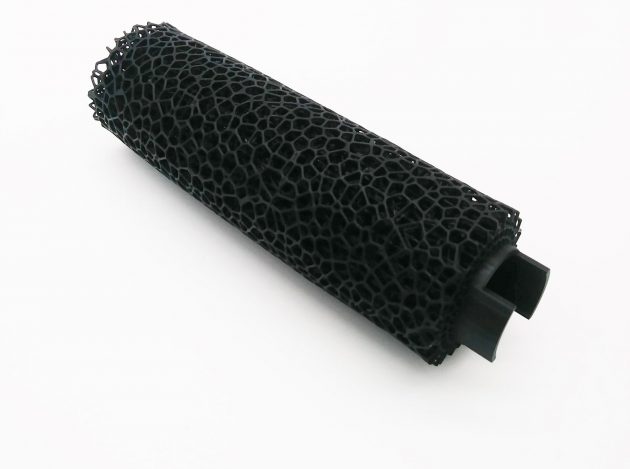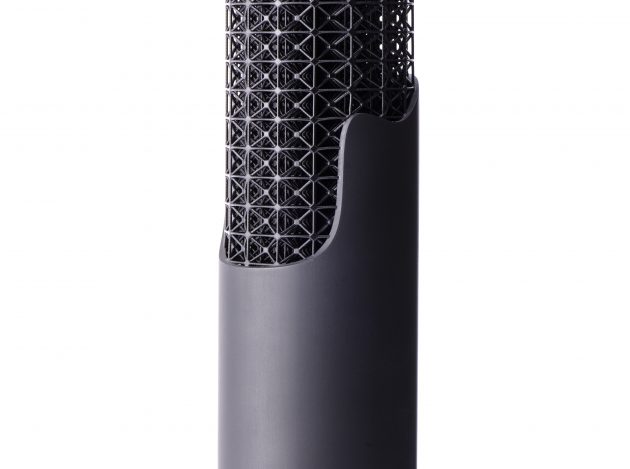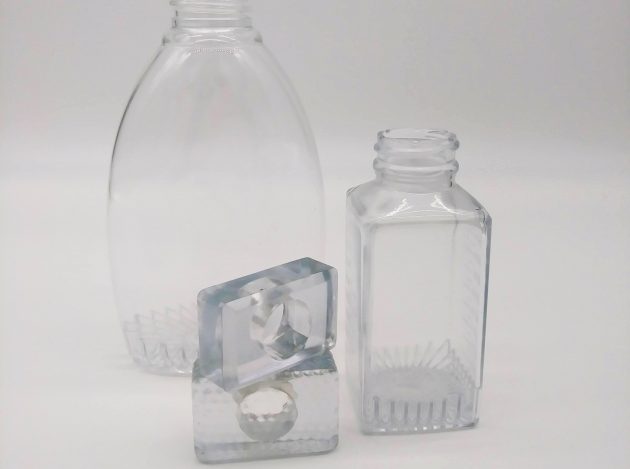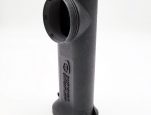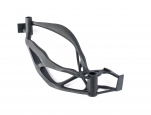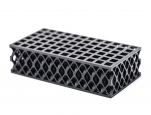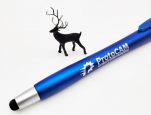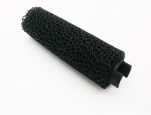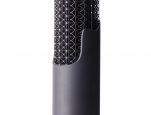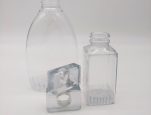Check out our recent webinar on DLS!
Carbon® Digital Light Synthesis™ (DLS™) is a breakthrough process that uses digital light projection, oxygen permeable optics, and programmable liquid resins to produce parts with exceptional mechanical properties, resolution, and surface finish. This Carbon 3D printing technology allows for the consolidation of parts, impossible geometries, and programmable lattices. The Carbon DLS 3D printing process enables our customers to bring better products to market in less time and make the widest range of real, functional parts.
“The Carbon [Digital Light Synthesis] 3D printing process was the perfect half step between late-stage functional prototyping and production. Aesthetics were crucial, and unless told otherwise, no one was able to identify the product was 3D-printed. [The process] accelerated business development and helped reduce risk as we approached tooling.” – Mike DiCanzio
“The Carbon [Digital Light Synthesis] 3D printing process was the perfect half step between late-stage functional prototyping and production. Aesthetics were crucial, and unless told otherwise, no one was able to identify the product was 3D-printed. [The process] accelerated business development and helped reduce risk as we approached tooling.” – Mike DiCanzio
The ProtoCAM Distinction
Here at ProtoCAM, we do Digital Light Synthesis differently. Our experienced engineers work with our customers on their unique DLS projects to understand exactly what their goals are and what they would like their end product to be. The ProtoCAM Distinction means that we’re available throughout the entire DLS additive manufacturing process, from initial idea to end product, and we have the capabilities and know-how to guide any project–from prototype to production–to completion.
Your personal project engineer is regularly available to assist you in choosing a material, technology, process, post-processing method, and more, and our friendly customer service representatives can update you on your project timeline, cost, and delivery requirements. Because we’re ISO 9001:2015 certified, you can be assured that your DLS prototypes and parts will be completed according to our high quality standards and produced and delivered to you as quickly as possible, with continuous improvement being a central goal to our facility’s procedures in order to meet our customers’ ever-evolving requirements. Our instant quoting platform means you can order your parts immediately, while our engineer-assisted quoting form allows you to connect further with our engineers on your more in-depth project, and with each order placed, you can be assured that we’re always working towards more sustainable and environmentally-friendly standards of material disposal and recycling, packaging methods, and more.
In offering our Digital Light Synthesis services, we utilize a system produced by Carbon, which has a build envelope of 7.4″x4.6″x 12.8″. Our printer can be used to create parts with complex geometries, lattices, undercuts, and undrafted walls, as well as heat resistance, strength, and toughness. We also offer a variety of materials including RPU 130, MPU 100, and the newly introduced LOCTITE® 3D IND405 Clear; see our Digital Light Synthesis Material Data list below for more details on all the materials we have available.
Read on to learn all ProtoCAM’s unique Digital Light Synthesis services, or request a quote now to start experiencing the ProtoCAM Distinction for yourself.
What is Digital Light Synthesis
The Digital Light Synthesis process is driven by Carbon’s groundbreaking Continuous Liquid Interface Production™, or CLIP™, and programmable liquid resins.
To avoid producing weak, brittle parts, as can sometimes be the result of some other manufacturing processes, the Carbon DLS 3D printing process overcomes this by using materials with an embedded second heat-activated programmable chemistry. This produces high-resolution parts with engineering-grade mechanical properties.
CLIP uses digital light projection in combination with oxygen permeable optics. CLIP is a photochemical process that cures liquid plastic resin into solid parts using ultraviolet light. It works by projecting light through an oxygen-permeable window into a reservoir of UV-curable resin. As a sequence of UV images are projected, the part solidifies and the build platform rises.
The heart of the CLIP process is the “dead zone” — a thin, liquid interface of uncured resin between the window and the printing part. Light passes through the dead zone, curing the resin above it to form a solid part without curing the part onto the window. Resin flows beneath the curing part as the print progresses, maintaining the “continuous liquid interface” that powers CLIP. Heat then sets off a secondary chemical reaction that causes the materials to adapt and strengthen, taking on exceptionally strong characteristics.
Digital Light Synthesis Tolerances
The technology has a general tolerance of +/- 0.005″ for 1st inch plus +/- 0.002″ for each add inch.
Need to compare technology tolerances? Click here to view our tolerance comparison chart.
Digital Light Synthesis in Action
Why Choose Digital Light Synthesis
Fine structural details and complex geometries
DLS allows for the incorporation of undercuts, perfectly straight walls, lattices, and more, without sacrificing manufacturability.
Strong, consistent parts
DLS produces consistent and predictable isotropic mechanical properties, creating parts that are solid on the inside like injection molded parts.
From prototype to production
DLS can be used throughout the production creation process, from functional prototypes through high volume production.
Typical Digital Light Synthesis Use Cases
| Functional prototypes for testing and iteration | Higher volume production parts | Complex geometries, lattices, undercuts, and undrafted walls |
| Part consolidation for streamlined production | Excellent surface finish and high detail |

